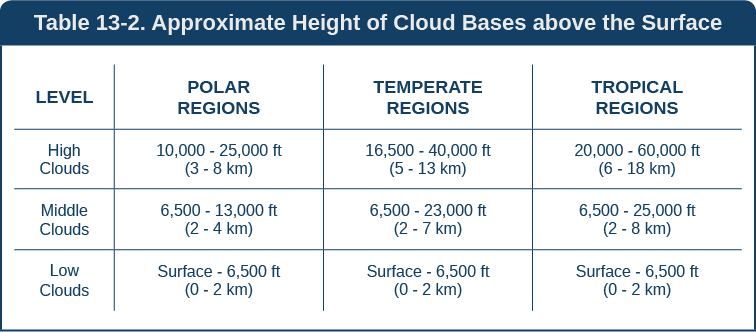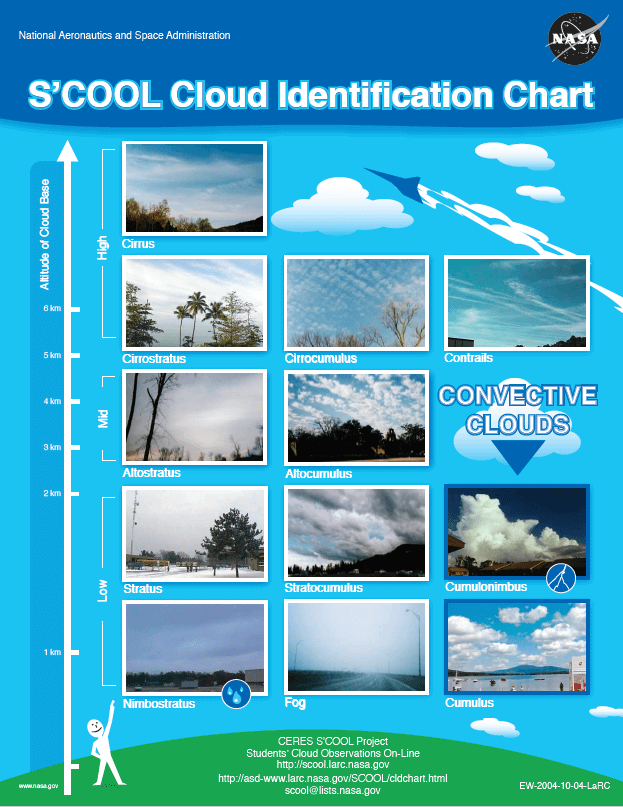Hidden dangers in our temperamental airspace companions.
Identifying clouds and their potential threats is key to having a keen aviator’s eye and ensuring that you don’t inadvertently encounter any hazards.
The FAA mandates yearly recurrent training for pilots on cloud identification and weather, so we thought we’d lay out an easy-to-follow study guide to cloud identification in this 3-part blog series.
Today, we are talking about turbulence in relation to cloud types, you can read about thunderstorm cloud identification and icing cloud identification here.
Cloud types and where to find them.
Clouds typically are classified based on their visual characteristics such as height, shape, and behavior.
Clouds are put into the following categories: low, middle, high, or those with extensive vertical development (aka extend through more than one level).
Typically, you’ll encounter the following types of clouds in each level:

• High clouds: There are 3 types of high clouds: cirrostratus, cirrocumulus, and cirrus. Usually, you will encounter very little turbulence in high clouds, but you can expect some turbulence from a cirrocumulus cloud.
• Middle clouds: There are 2 types of high clouds: altostratus and altocumulus. Some turbulence is expected from altocumulus clouds, but typically little to no turbulence is experienced in an altostratus cloud.
• Low clouds: There are 4 types of low clouds:
- stratus
- stratocumulus
- nimbostratus
- cumulus.
If you see a stratocumulus cloud, expect some associated turbulence.
If you see a cumulus cloud, first note whether or not it has vertical development.
A cumulus with little vertical development means you can expect some turbulence.
However, a towering cumulus cloud means you can expect very strong turbulence.
Generally, pilots can expect to experience some degree of turbulence in relation to clouds below 20,000 ft. AGL (beneath or within low/middle clouds), but above 20,000 ft.
AGL is usually very smooth because you will be in the high clouds or above the typically turbulent clouds (not considering clear air turbulence or jet stream).
Now, there is one exception to this rule: cumulonimbus clouds.* Those whipped mashed potato or stacked cotton ball-like clouds hold some of the most dangerous flying conditions known to aviators, including extreme turbulence, all wrapped up in a little fluffy package.
Cumulonimbus clouds show vertical development within a range of the typical cloud levels.
* others on the list to avoid, though seen more rarely, are the Mammatus clouds (wind shear result), Kelvin-Helmholtz clouds (severe wind shear result), and Lenticular clouds (mountain wave activity)

Cloud-related turbulence avoidance.
As previously mentioned, clouds above 20,000 ft AGL usually don’t hold the visual indication of any turbulence, but that isn’t always the case.
A general rule of thumb is to avoid cumulus-type clouds, particularly if there is any vertical building involved. Avoid cumulus clouds or at the very least, be prepared for turbulence when flying through these clouds (i.e. fasten seatbelt chime, single chime to flight attendants to stow any items, etc). When in doubt, request to circumnavigate any kind of cumulus cloud with ATC.
Take our basic indoc training course today!
Want your pilots to have this basic knowledge in the cockpit?
CTS offers online aviation training solutions to fit any requirement from basic indoctrination (both initial new hire to recurrent), areas of special operations, operations manual training, and beyond. Check out our Part 135 online training courses today to see how CTS can provide you with the customizable and current training solution your training department has been looking for.
Not a Part 135 operator? No problem! We also offer Part 91K and Part 125 basic indoc online training as well.
RELATED READING
RELATED CTS TRAINING









